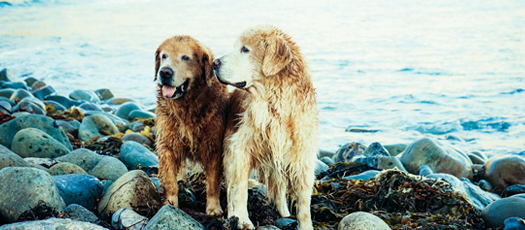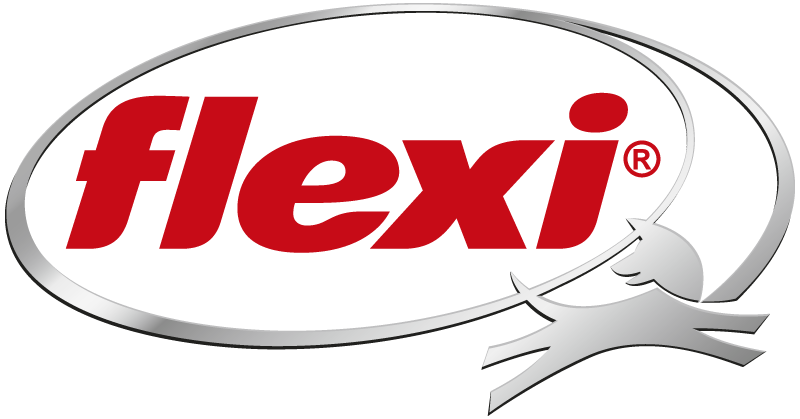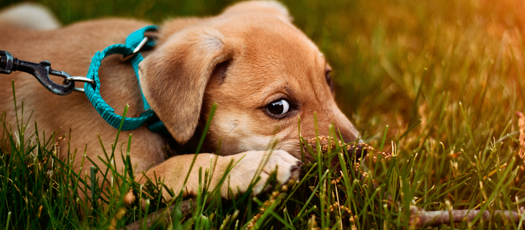
What happens when a dog grows old? Important changes in your dog’s body
It’s inevitable that at some point, our dogs grow old. But what happens in the dog’s body when it gets old? Aging is fundamentally a biological process. It cannot be prevented or reversed. But there are ways to affect and slow the regression phase.
This article offers a summary of the main changes that occur in a dog’s body in the natural course of aging. It will give you as a dog owner a better understanding of what happens to your dog as it grows older and will make your everyday life together easier as well.
Visible outward changes – coat, nails, and more
The outward signs of the aging process are quite obvious, but as we go about our daily lives with our dogs, we typically don’t notice until they strike us all at once. You look at your dog and suddenly think, “Wow, my dog has really gone gray!”
The graying of the coat in the head area is also the first obvious sign that a dog is growing older. Vision and hearing problems are another sign. Over time, a dog’s movements grow a bit stiffer, and the enjoyment of physical activity gradually diminishes. In many cases, your furry friend may lose muscle tone and even seem to have “shrunk.” Older dogs need more sleep and peace and quiet and take longer to rest and recover.
As time goes by, the coat on the rest of the dog’s body may go gray as well. How quickly a dog goes gray, and how gray, varies individually from one dog to the next. The structure and quality of the dog’s coat changes overall. It may seem scruffier and lose its shine.
The dog’s skin changes, too. Since most of a dog’s body is covered by its coat, this isn’t very obvious to us, but areas of heavy friction, such as the elbows, tend to form visible calluses from lying down. Warts in various parts of the body are not unusual, either. If you aren’t sure about a lump or skin growth and whether it might be a wart, it is a good idea to have your veterinarian check it.
It is also important to check the pads of your dog’s paws. They may crack and need more extensive care. One very important point is nail growth in older dogs. The dog’s nails tend to grow more, while at the same time, most older dogs spend less time walking and running. This means the nails also need special attention. I recommend making nail care a regular part of your body care routine with your dog. It’s best not to wait until your dog is older to start this, since that way, your dog will already be used to having its nails trimmed.
What happens to a dog’s body when it grows old?
With advancing age, the cell division within the body slows and eventually stops. The result is that the functions of the cells diminish. The dead cells are replaced in middle age by connective tissue, and in old age by fatty tissue. The amount of fluid in the body also decreases, and deposits of metabolic waste products form inside the cells. This lower amount of bodily fluid is very obvious in people.
At 20, we have firm, plump skin, but it grows drier and forms wrinkles as we grow older. This is simply part of the natural aging process. Still, what is outwardly visible from the skin is also true of the rest of the body. “Dryness” increases throughout the body.
In the musculoskeletal system, too, the reduced amount of fluid in the body has certain effects. There is less fluid there as well. The ligaments and discs grow porous, increasing the risk of herniated discs and ligament tears. The joint capsule shrinks, too, and the cartilage receives a lower supply of fluid and becomes more porous. The same thing happens to the bones. As a result, they lose resilience, strength, and stability, and the risk of fractures rises. The muscles also receive less fluid.
Metabolism & immune system
These processes add up to a slower immune system, which brings changes in energy requirements as well. At the same time, the immune system grows weaker, leaving the dog more susceptible to infectious diseases and autoimmune disorders. Recovering from an illness takes significantly longer.
As their metabolism slows, older dogs also need more warmth, growing cold more quickly than younger ones.
Special tip: In cold and rainy weather, I strongly recommend that you put a jacket or sweater on your dog for protection. Like people, dogs don’t much like to be cold, and a dog jacket or sweater isn’t just some fashionable accessory; it offers protection against inclement weather.
Musculature
As dogs age, their muscles also shrink and lose strength. The loss of muscle tone means less physical ability, but that isn’t all. It also creates greater strain on the bones and joints. In advanced age, muscle cells are replaced by fat cells. How pronounced the loss of muscle tone is depends to a great degree on how active your canine companion is. If you always keep your dog active, you have a big influence on how good its muscle tone is as it ages. In this regard, dogs are like people: Those who have stayed physically active their whole lives are much fitter and more physically capable as they age. The aging process is slowed.
Skeleton
As described above, the bones and joints undergo changes as a dog ages as a result of factors including loss of fluid. With advancing age, the cartilage grows less elastic, and decreases are noted around the edges of the joints in particular. The joint surface grows smaller, and mobility decreases. Fragments of cartilage break off, and arthritis sets in. The synovial fluid becomes viscous and diminishes in volume. The joint capsule shrinks, and joint lips and lesions form on the bones. One especially well-known example is the bony growths that form along the spinal column in the form of spondylosis. At the same time, connective tissue structures such as discs become porous, and the mass of the bones decreases as well. The risk of osteoporosis rises.
All of these changes are exacerbated by excess weight and lack of physical activity. You should always be sure to make sure your dog is not overweight, including at younger stages, since excess weight will affect the aging process.
Nervous system
The nerves become less conductive, which can lead to neurological problems. Nerve conductivity is also affected by possible compressions of the spinal cord by conditions of the spinal column, such as slipped discs and spondylosis. At the same time, there are also changes in the brain. As with people, these may involve issues of perception and orientation, and memory loss is common. Dogs have a harder time finding their way around their environment. In addition, they may feel less thirsty and drink less, which means they are at risk of dehydration. You should always make sure your canine companion is getting enough to drink. Getting a lot of fresh air (additional oxygen) is also beneficial to your dog’s brain and maintaining cognitive function.
Sensory organs
A dog’s vision and hearing are especially likely to diminish with age. As the senses become less acute, the dog may also experience behavioral changes. Your dog may startle or become anxious more easily in certain situations, or it may be much more relaxed.
Your dog will need a bit more time to get used to new situations and to put things into action when communicating with you. In many cases, this is misinterpreted as stubbornness or lack of obedience. Try to be more lenient with your dog and give it some extra time.
Cardiovascular system and breathing
As part of the natural aging process, cardiac function diminishes, which can lead to diseases such as heart failure. I recommend having your dog’s heart function checked regularly as a result.
Lung function also decreases with advancing age, as the lungs have a harder time expanding. Breathing changes result, and the dog’s oxygen supply decreases. Here as well, regular physical activity outdoors in the fresh air keeps the cardiovascular system and lung function in check and supplies the brain with oxygen.
Incidentally, poor dental care and tartar formation can trigger heart and respiratory problems, so be sure to check your furry friend’s mouth regularly and take care of its teeth.
Summary: What happens when a dog grows old?
There’s no way to keep a dog from growing old, but we can actively affect the aging process throughout the dog’s life. There are many changes in a dog’s body when the dog grows older. When you know about these changes, it is easier for you as a dog owner to deal with them and understand situations where your dog reacts differently than before and arrange your everyday life accordingly.


